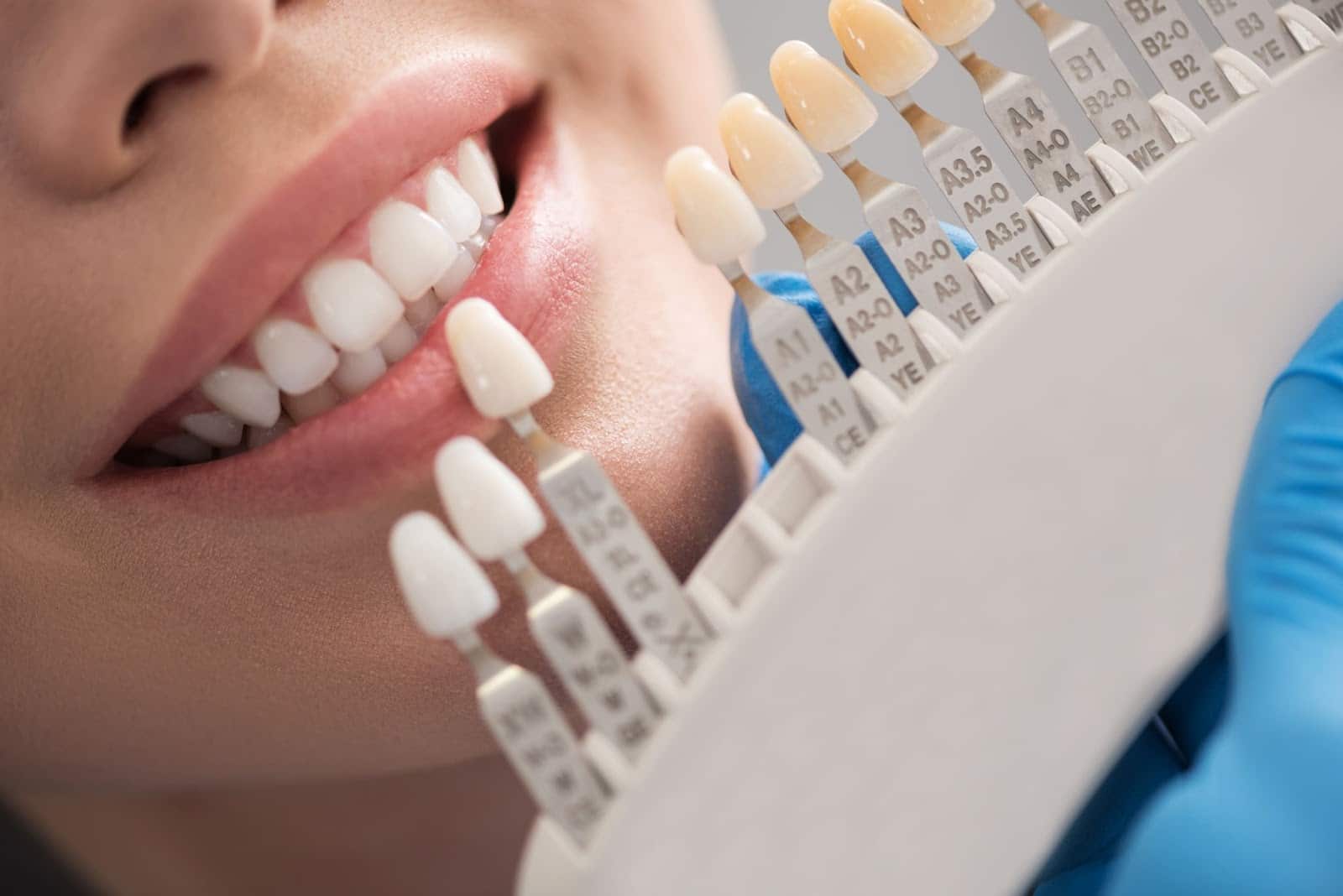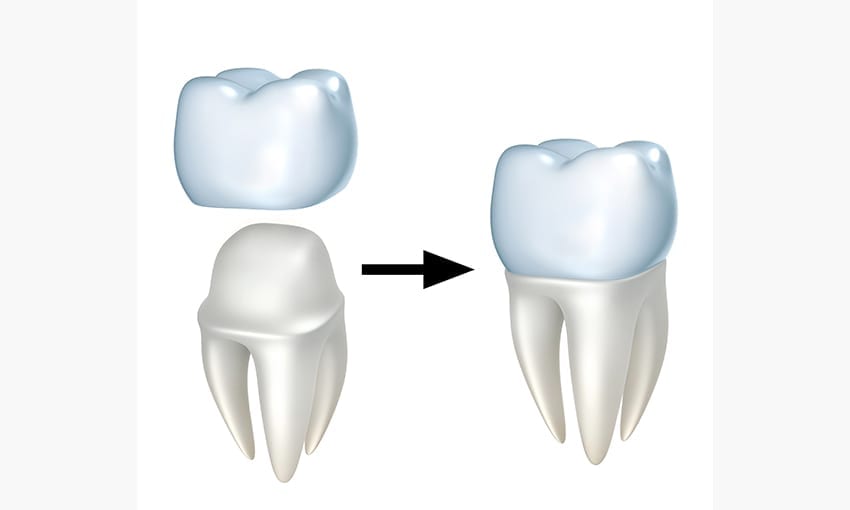If you’ve ever had a dental crown placed, you know that it can take some time to get used to the new addition in your mouth. Whether it’s adjusting to the shape or dealing with sensitivity, there are several factors that can impact how long it takes for your crown to feel like a natural part of your smile. In this blog post, we’ll explore the crown conundrum and provide tips on how to make the adjustment process as smooth as possible. So grab a seat and let’s dive in!
Table of Contents
What is a Crown?
A dental crown is a type of dental restoration which completely caps or encircles a tooth or dental implant. Crowns are often used to restore a tooth’s function and appearance following a restorative procedure such as a root canal. They are also used to support large fillings when there is insufficient tooth remaining, to protect weak teeth from fracturing, and to cover misshapen or severely discolored teeth.
While crowns are typically made from porcelain or ceramic, they can also be made from metal, composite resin, or a combination of these materials. Porcelain and ceramic crowns are the most popular type as they provide the best natural color match and can be shaded to blend in with the surrounding teeth. Metal crowns are usually used on back teeth as they are stronger and less likely to chip or wear down over time. Composite resin crowns are not as strong as metal or ceramic crowns but can be matched to the color of your natural teeth.
It typically takes two dental visits to complete a crown procedure. During the first visit, the tooth will be prepared for the crown and an impression will be taken of the tooth. This impression will be used to create your custom-made crown. A temporary crown will then be placed over the prepared tooth until your permanent crown is ready. At your second appointment, the temporary crown will be removed and your permanent crown will be cemented into place.
Most people adjust quickly and easily to their new
What Are the Benefits of Having a Crown?
There are many benefits of having a crown, including improved oral health, a more aesthetically pleasing smile, and increased confidence. While it may take some time to adjust to the feel of a new crown, the long-term benefits are worth the temporary discomfort.
If you are considering getting a crown, be sure to consult with a qualified dentist to discuss your options and find the best solution for your individual needs.
How Long Does It Take to Adjust to a New Crown?
When you get a new crown, it can take some time to get used to it. The first few days, you may feel like the crown is too high or that it doesn’t fit right. This is normal. Your mouth is still getting used to the new crown and the sensation will go away. It usually takes about a week or two for the mouth to adjust to the new crown. In the meantime, here are a few things you can do to help make the adjustment period go more smoothly:
– avoid chewing hard foods or biting your nails on the side where your new crown is – brush and floss regularly – use a mild salt water rinse if your mouth feels sore – see your dentist if you have any problems or concerns
If you follow these guidelines, you should be able to adjust to your new crown without any major issues.
 What Can You Do to Help Adjust to a New Crown?
What Can You Do to Help Adjust to a New Crown?
If you’ve ever had a tooth crowned, you know that the process can be a bit uncomfortable. After all, you’re getting a new piece of porcelain or metal fitted over your existing tooth. And while it’s not a painful procedure, it can certainly be an adjustment.
So, how long does it take to adjust to a new crown?
The answer is: it varies from person to person. Some people adapt quickly and don’t experience any major issues. Others may find that it takes a few days or even weeks to get used to the new crown.
There are a few things you can do to help make the adjustment period go more smoothly:
– Be patient: It’s important to give yourself time to get used to the new crown. Don’t expect it to feel totally natural right away. Give yourself a few days (or even weeks) to adjust.
– Practice proper oral hygiene: Be sure to brush and floss regularly, both before and after getting your new crown. This will help keep your mouth healthy and prevent any infection or other complications.
– Eat soft foods: For the first few days after getting your new crown, stick to soft foods like soup, yogurt, and mashed potatoes. Chewing hard foods can put too much pressure on the new crown and cause discomfort.
After following these tips, most people find that they adjust just fine to their new crowns and can go about their daily lives
How Can You Monitor the Fit of Your New Crown?
If you’re like most people, you probably don’t give much thought to your teeth. But when you have a new crown fitted, it’s important to monitor the fit of the crown and make sure it’s comfortable. Here are a few things to look for:
– Check the fit of the crown when you bite down. It should be snug against your tooth, with no gaps.
– Make sure the crown isn’t causing any discomfort or pain.
– Look for any food or plaque that may have gotten trapped underneath the crown.
If you notice any of these things, please contact your dentist right away.
Is There Anything That Can Make the Adjustment Process Easier?
The answer to this question is unfortunately, no. There is no magic pill or solution that can make the adjustment process to a new crown easier. However, there are a few things that you can do to help make the transition smoother.
First, it is important to have realistic expectations. It is going to take some time to get used to your new crown and how it feels in your mouth. Be patient with yourself and give yourself time to adjust.
Secondly, make sure to practice good oral hygiene. This means brushing twice a day, flossing daily, and using mouthwash. Keeping your mouth clean will help you feel more comfortable with your new crown and will also help the transition process go more smoothly.
Finally, if you are still having trouble adjusting after a few weeks, don’t hesitate to reach out to your dentist for help. They can offer advice on how to make the adjustment process easier or answer any questions you may have about your new crown.
Alternatives to Getting a Crown
If you’re considering getting a crown, you may be wondering how long it will take to get used to it. Here are some alternatives to getting a crown that may help you adjust:
-Dental veneers: Veneers are thin, custom-made shells that cover the front surface of your teeth. They can be made from porcelain or composite material, and they’re bonded to your teeth with a special adhesive. Veneers can improve the appearance of your teeth and make them look longer, whiter, and more uniform.
-Invisalign: Invisalign is a clear aligner system that gradually moves your teeth into place over time. It’s virtually invisible, so nobody will know you’re wearing it unless you tell them. Invisalign is a great alternative for people who don’t want to wear braces or have other dental work done.
-Tooth bonding: Tooth bonding is a procedure in which tooth-colored resin is applied to your teeth and hardened with a special light. Bonding can improve the appearance of your teeth and make them look longer, whiter, and more uniform. It’s also used to repair chipped or cracked teeth, close gaps between teeth, and change the shape of teeth.
-Teeth whitening: Teeth whitening is a safe and effective way to brighten your smile. You can get your teeth professionally whitened at your dentist’s office, or you can use an at
Conclusion
In this article, we explored how long it takes to adjust to a new crown. We discussed the factors of age, size and type of crown that can determine how long adjustment will take. Ultimately, everyone is different and adjustments may vary depending on individuals’ particular situation.
You May Also Like:The Ultimate Guide to Whitening Dentures: What You Need to Know


